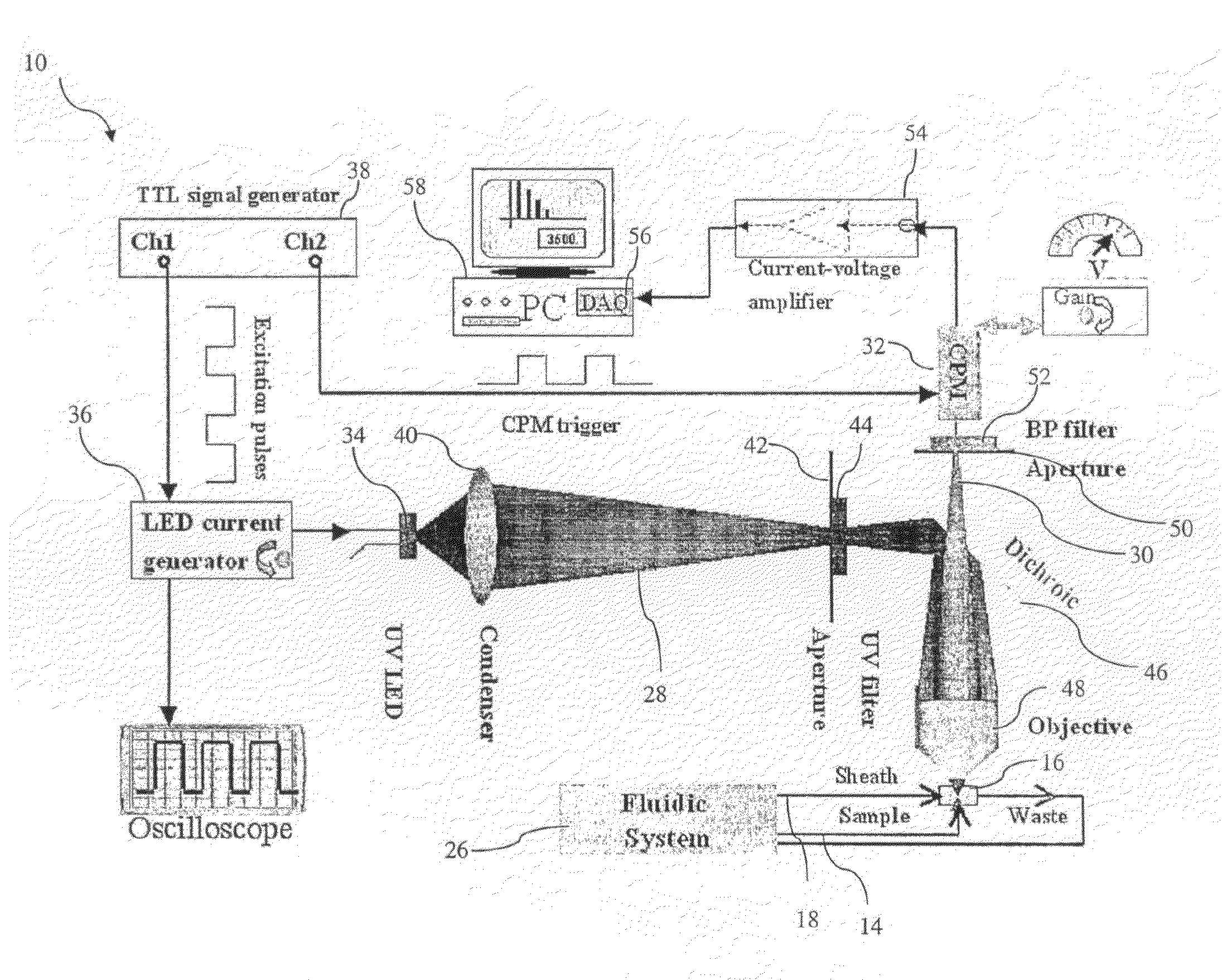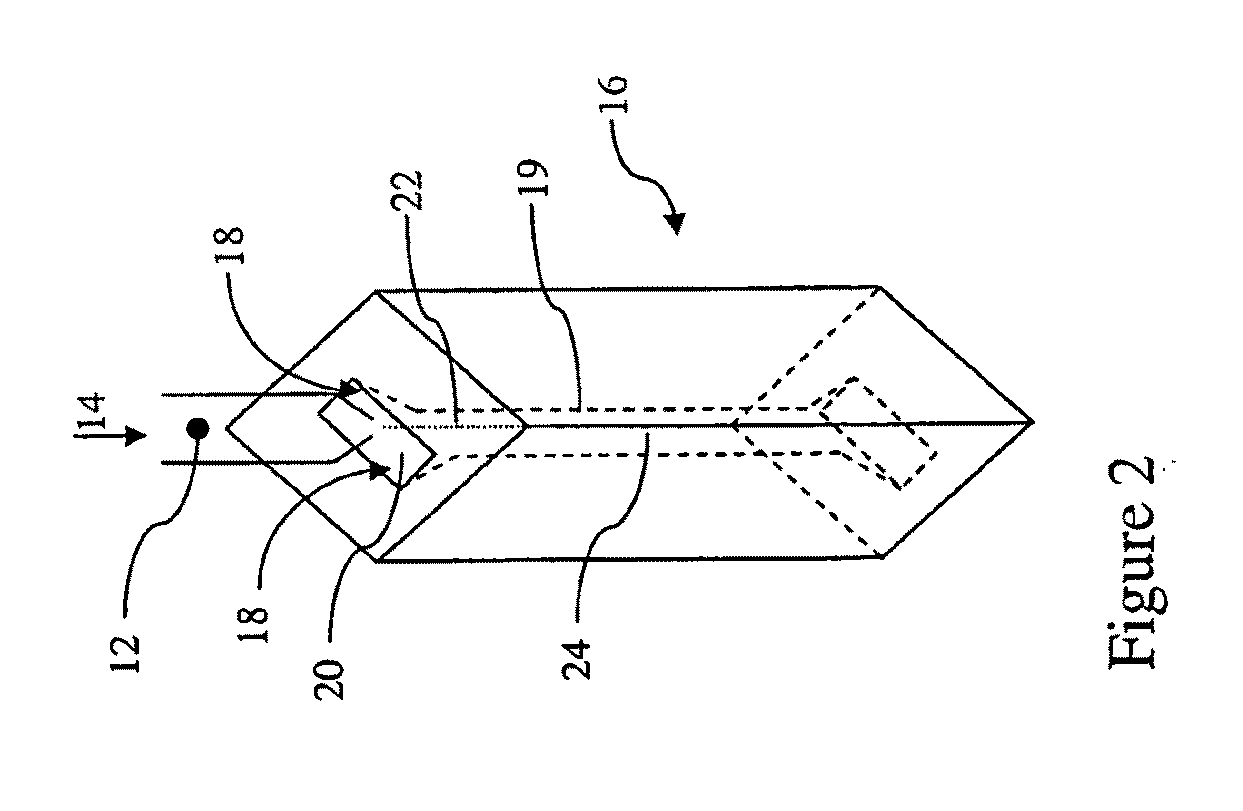Tiime gated fluorescent flow cytometer
a flow cytometer and fluorescent technology, applied in the field of tiime gated fluorescent flow cytometers, can solve the problems of reducing the visibility of fluorescent markers, spectral selection techniques are useful, and fluorescent markers can lose much of their discriminatory power
- Summary
- Abstract
- Description
- Claims
- Application Information
AI Technical Summary
Benefits of technology
Problems solved by technology
Method used
Image
Examples
Embodiment Construction
[0058]FIG. 1 depicts one embodiment of an apparatus 10 for detecting a particle labelled with a fluorescent marker. As shown in FIG. 2, the particle 12 is suspended in a sample fluid 14 that is injected into a capillary 19 of a flow cell 16 for interrogation. A sheath fluid 18 is simultaneously injected into the capillary 19, in an annular region 20 around the injected sample fluid 14. The small diameter of the capillary 19 ensures that the sheath fluid 18 flow is laminar. The sheath fluid 18 hydrodynamically focuses the sample fluid 14 into a thin fluid channel 22 along the axis of the capillary 19 lining up the particle 12. In this embodiment, the flow cell 16 is made of an ultraviolet transparent optical material such as quartz. The capillary 19 has an internal cross section of 430 micrometres by 180 micrometres. The flow of the sample 14 and sheath 18 fluids is promoted by a fluid vacuum pump 26. In this embodiment, the fluid flow is 15.6 millilitres per minute and 166 microlitr...
PUM
| Property | Measurement | Unit |
|---|---|---|
| fluorescence lifetime | aaaaa | aaaaa |
| velocity | aaaaa | aaaaa |
| power | aaaaa | aaaaa |
Abstract
Description
Claims
Application Information
 Login to View More
Login to View More - R&D
- Intellectual Property
- Life Sciences
- Materials
- Tech Scout
- Unparalleled Data Quality
- Higher Quality Content
- 60% Fewer Hallucinations
Browse by: Latest US Patents, China's latest patents, Technical Efficacy Thesaurus, Application Domain, Technology Topic, Popular Technical Reports.
© 2025 PatSnap. All rights reserved.Legal|Privacy policy|Modern Slavery Act Transparency Statement|Sitemap|About US| Contact US: help@patsnap.com



